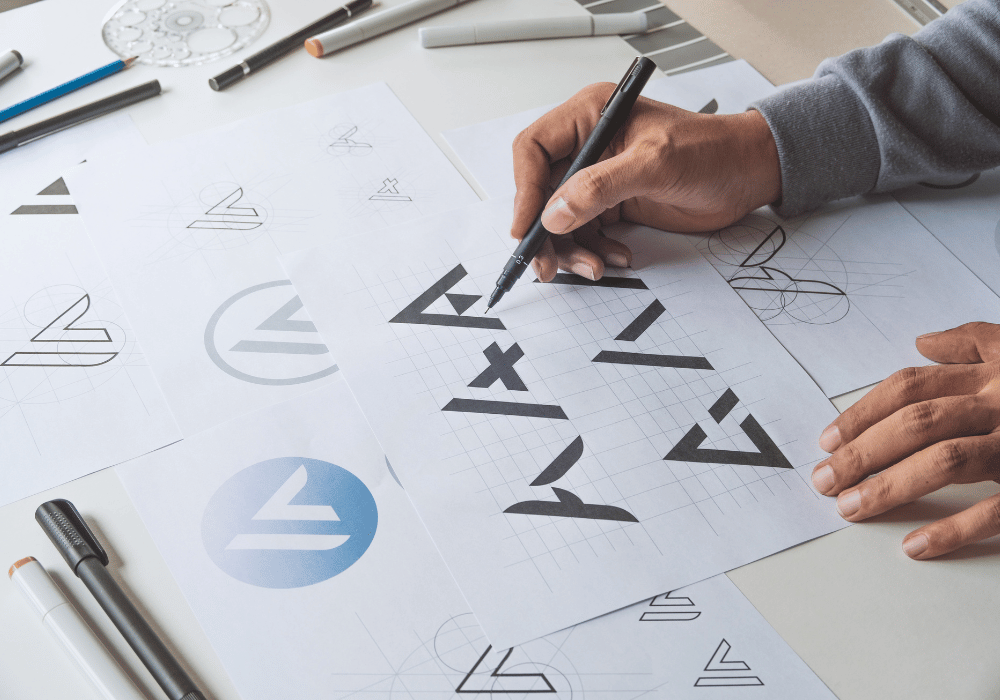A well-designed logo is key for a strong brand identity. It shows how your business is seen by potential customers. A good logo can make your business stand out.
Choosing the right logo style is important. It should show what your company values and mission. This can make your business more appealing to your target audience. A quality logo is the first step to a strong brand.
Introduction to Logo Design
Logo design is vital for business recognition. It’s important to get it right. A good logo represents your company well and connects with your audience.
Key Takeaways
- Logo design is essential for establishing a strong brand identity and business recognition.
- A well-designed logo can significantly impact how your business is perceived by potential customers.
- Effective logo design is critical for creating a lasting impression and setting your business apart from the competition.
- A logo that accurately represents your company’s values and mission can enhance your business recognition and appeal to your target audience.
- Investing time and effort into creating a high-quality logo is crucial for establishing a strong foundation for your brand identity and business recognition.
- Logo design should be a thoughtful and intentional process that considers your brand’s unique needs and goals.
Understanding the Importance of Logo Design in Brand Identity

A well-designed logo is key for brand recognition. It shows a company’s values, mission, and what makes it special. Logos can draw in or push away potential customers. Knowing the psychology behind logos helps businesses make designs that connect with their audience.
Research shows logos are vital in shaping consumer perception. A good logo can share a company’s values and personality. This makes it a crucial part of brand recognition. A well-thought-out logo can also build trust and loyalty with customers.
- Simple and memorable design
- Scalability and versatility
- Color palette and typography
- Uniqueness and originality
Understanding logo design’s role in brand identity and its psychology is crucial. Businesses can then create logos that clearly share their values and mission. This drives brand recognition and builds customer loyalty.
| Logo Design Element | Importance |
|---|---|
| Simple and memorable design | High |
| Scalability and versatility | Medium |
| Color palette and typography | High |
| Uniqueness and originality | Medium |
Different Types of Logo Styles
Logo styles are key in creating a brand identity. There are many design options, each with its own strengths. Understanding these can help businesses pick a logo that fits their brand and appeals to their audience.
Some popular logo styles include:
- Wordmarks: a logotype-based logo that uses a custom typography to represent the brand name
- Letterforms: a logo based on a single letter or initials of the brand name
- Icons: a symbol or graphic that represents the brand
- Combinations: a combination of a wordmark or letterform with an icon
Brands like Google and McDonald’s have used these styles well. Google’s wordmark and McDonald’s golden arches are great examples. By exploring these styles, businesses can make a logo that stands out and makes a lasting impression.
The right logo style depends on a brand’s values and audience. By understanding these, businesses can create a logo that truly represents their brand. This connection with customers is crucial for long-term success.
Color Psychology in Logo Design

Colors are key in logo design, as they can stir emotions and send messages. They help a brand stand out from others. Knowing the psychology of colors is vital for a logo that truly represents a brand.
In branding, the right colors can make a huge difference. A well-chosen logo can boost a brand’s image and appeal. For example, blue is often seen as trustworthy, which is why banks use it. Red, on the other hand, is full of energy, making it perfect for sports brands.
Understanding Color Meanings
It’s important to know what different colors mean. This helps create a logo that speaks to the audience. Here are some common color meanings:
- Red: energy, excitement, passion
- Blue: trust, stability, calmness
- Green: nature, growth, harmony
Typography and Font Selection for Your Logo
Typography is key in logo design, shaping a brand’s image and recognition. The right font can make a logo stand out, affecting readability, uniqueness, and how well it scales. In logo design, typography means arranging fonts to send a message. For example, the Coca-Cola logo uses a unique script font that’s instantly recognizable.
Choosing the right font for a logo involves looking at readability, uniqueness, and scalability. A good logo font should look clear in all sizes, from small business cards to large billboards. It should also be unique, showing off the brand’s personality and values. Google’s logo, for instance, uses a sans-serif font, showing modern simplicity.
When picking a font, it’s crucial to match it with the brand’s look and message. A well-designed logo balances typography with color and images. By picking the right typography and font, businesses can build a strong brand identity. This identity will connect with their audience and help them stand out.
- Legibility: Can the font be easily read in various sizes and formats?
- Uniqueness: Does the font reflect the brand’s personality and values?
- Scalability: Can the font be scaled up or down without losing its integrity?
- Consistency: Is the font consistent with the brand’s overall visual identity?
By carefully choosing typography and font for their logo, businesses can lay a solid foundation for their brand. This will help them make a lasting impression on their audience.
Minimalist vs Complex Logo Designs
Choosing between a minimalist or complex logo is crucial for a brand’s identity. Minimalist logos are simple and versatile. On the other hand, complex logos tell a detailed story.
Minimalist logos are easy to recognize and scale well. They work in many places. Yet, complex logos share a brand’s values in a creative way. The goal is to balance simplicity and detail.

